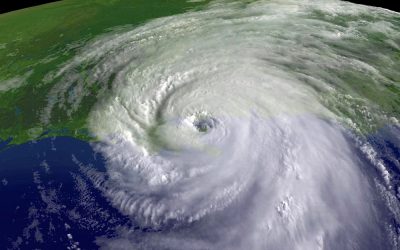When disaster strikes, who sees it first?
Just two years ago, Hurricane Idalia tore through Florida’s Gulf Coast, leaving a trail of destruction.
Entire neighborhoods were submerged, roads were washed away, and thousands of homes sustained severe wind and flood damage. In the wake of the storm, insurance adjusters faced a familiar challenge—navigating hazardous conditions to assess losses, process claims, and help residents rebuild.
Instead of waiting for floodwaters to recede, insurers deploy drones, capturing real-time aerial footage of affected areas. Within hours, they can assess damages, expedite claims, and provide much-needed relief to homeowners without unnecessary delays.
This isn’t the future. It’s happening right now.
From wildfires in California to hurricanes in Florida, drones are becoming one of the most valuable tools in the insurance industry. What was once a novelty is now a necessity, revolutionizing claims processing, risk assessment, and fraud detection.
But how exactly are drones used in insurance, and what challenges remain?
Drones in Insurance: How They Work
Drones, also known as unmanned aerial vehicles (UAVs), have come a long way from being just military tools or recreational gadgets. Equipped with high-resolution cameras, thermal sensors, GPS, and AI-driven analytics, drones can capture real-time aerial data, allowing insurers to assess damage faster and more accurately than traditional methods.
Instead of relying solely on manual inspections, which can be time-consuming and even dangerous, insurance companies are deploying drones to survey disaster-hit areas, inspect roofs, evaluate crop damage, and even prevent fraud.
Transforming Claims Processing
When disaster strikes, homeowners and businesses rely on insurance payouts to start rebuilding. But claims are always slowed down by delays, logistical challenges, and even disputes over damage assessments.
Drones are changing that through:
- Faster Damage Assessment: Insurers can deploy drones within hours of an event, capturing high-resolution images and videos to assess the extent of the damage, sometimes before adjusters even set foot on the property.
- Improved Accuracy: Unlike ground-level inspections, drones provide aerial perspectives that capture the full scope of damage, reducing disputes between insurers and policyholders.
- Enhanced Efficiency: A single drone operator can inspect multiple properties in a day, speeding up claims processing and getting homeowners the payouts they need faster.
Risk Assessment & Fraud Prevention
Beyond claims, drones are proving invaluable in risk assessment and fraud detection.
- Pre-Event Risk Analysis: Insurers can deploy drones to inspect properties before a disaster strikes, helping assess vulnerabilities and even adjust premiums based on actual risk levels.
- Fraud Detection: Drones help verify claims by comparing before-and-after aerial imagery, catching inconsistencies that might indicate exaggerated or false reports.
Take agriculture insurance, for example. By using drones to monitor crop conditions before and after extreme weather events, insurers can ensure authentic valuations, thus eliminating the risk of policyholders inflating their losses.
Challenges & Roadblocks
Despite their advantages, integrating drones into insurance workflows isn’t without hurdles.
Here are a few:
- Regulatory Barriers: In the U.S., the Federal Aviation Administration (FAA) imposes strict regulations on drone usage, including flight altitude restrictions, operator licensing, and no-fly zones near airports and crowded areas.
- Privacy Concerns: Homeowners may feel uneasy about drones flying over their properties, leading to legal and ethical questions. Insurers must be transparent about data collection and ensure compliance with privacy laws.
- High Initial Costs: While drones can save insurers millions in the long run, the upfront investment in hardware, software, and trained operators can be steep.
Final Thoughts
Despite such challenges, leading insurers are pushing forward.
Companies like State Farm and Allstate are actively using drones for roof inspections and post-disaster assessments, while technology providers like ActionDrone and EagleView are partnering with insurers to provide drone-based claims solutions.
From faster claims processing and risk assessment to fraud prevention and disaster response, UAVs are making insurance smarter, safer, and more efficient.


